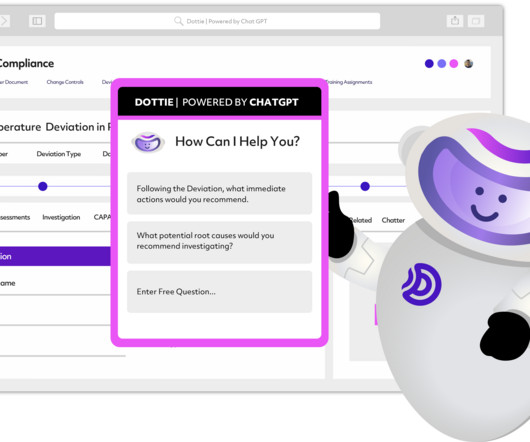Dot Compliance Launches First AI Based ChatGPT Powered eQMS for Life Sciences
HIT Consultant
APRIL 5, 2023
What You Should Know: Dot Compliance , a leading provider of eQMS compliance solutions for the life sciences sector, has introduced an industry-first, ready-to-use AI-Based electronic Quality Management System for life sciences, powered by an embedded generative and predictive artificial intelligence.












Let's personalize your content